Recent Articles
Popular Makes
Body Types
2018 Honda Civic Si Road Test and Review
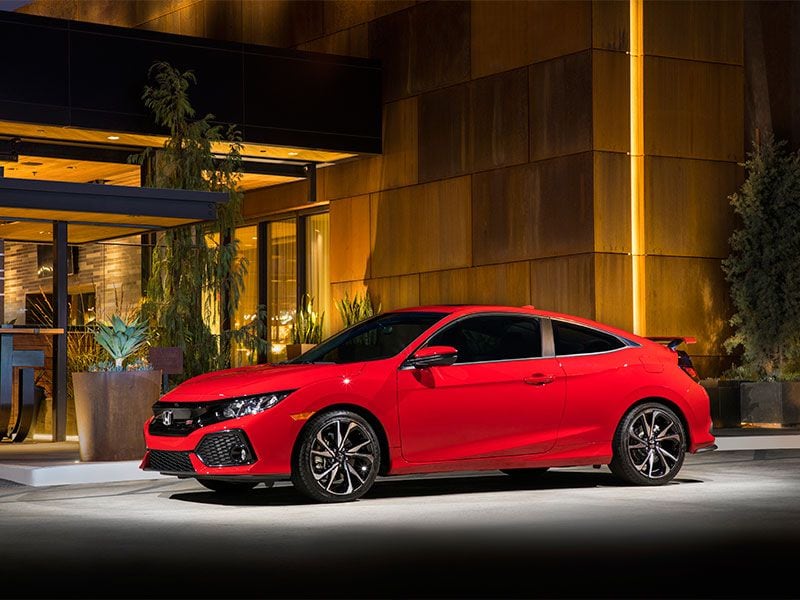
2017 Honda Civic Si Coupe exterior hero ・ Photo by Honda
The initials — S i— stand for Sport Injection, a distinction Honda has bestowed on higher performing editions of standard models — Civic, CR-X, Prelude — since the mid-1960s. It’s appeared most frequently on Civics, and the latest edition is the eighth in 10 generations of Honda’s popular compact: The 2018 Honda Civic Si. How does it stack up in the compact hot rod sweepstakes, a field that’s rich with formidable small scale tigers? Based on a half-day at Honda’s southern California proving grounds in the high desert near Mojave, followed by a half day on a challenging canyon road paralleling the nearby Kern River, we emerged with some strong impressions. Let’s start with the fundamentals.
Great Foundations
The latest generation of Civic (number 10) is certainly one that delivers a satisfying driving experience and is not a car that cries out for dynamic enhancements, particularly in the Sport Hatchback version. Its front-drive unitbody is exemplary in terms of chassis rigidity, as well as noise isolation. Nevertheless, in typical Si tradition, Honda has selectively stiffened the front-drive chassis; enhanced the suspension tuning, adding two operating modes (Normal and Sport); enhanced shifting of the six-speed manual gearbox; enhanced the brake system; and sharpened steering response. There are some very good front-drive chassis in the sport compact class, and the latest Civic Si unitbody ranks with the best.
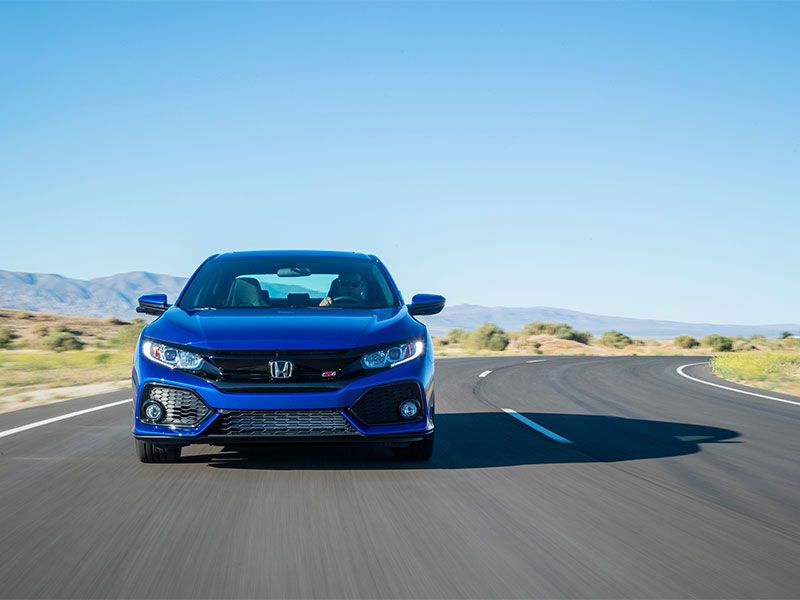
Photo by Honda
Horsepower Status Quo
At a glance, the higher performing aspect of the new Civic Si may be a little difficult to perceive. Unlike the rest of the Civic family, which offer two engine choices, the Si has just one: The turbocharged 1.5-liter four that’s the upgrade option in the other Civics. In Si tune, it huffs up 205 horsepower, 25 more than the version that propels the Civic Hatchback Sport. However, that’s the same horsepower output as the naturally-aspirated 2.4-liter four that powered the previous generation. But while the horsepower rating remains static, the turbo generates more torque than the previous engine—192 pound-feet versus 174—and it comes on earlier in the rpm range. That factor, plus reduced mass (curb weight is down almost 100 pounds compared to the previous Si, according to Honda), gives the Si a little livelier performance when the light turns green.
But higher performance, as it applies to the Si, has more to do with agility and amplifying the partnership between car and driver than it does with 0-to-60. It’s a long-standing Si tradition, that continues with the latest edition.
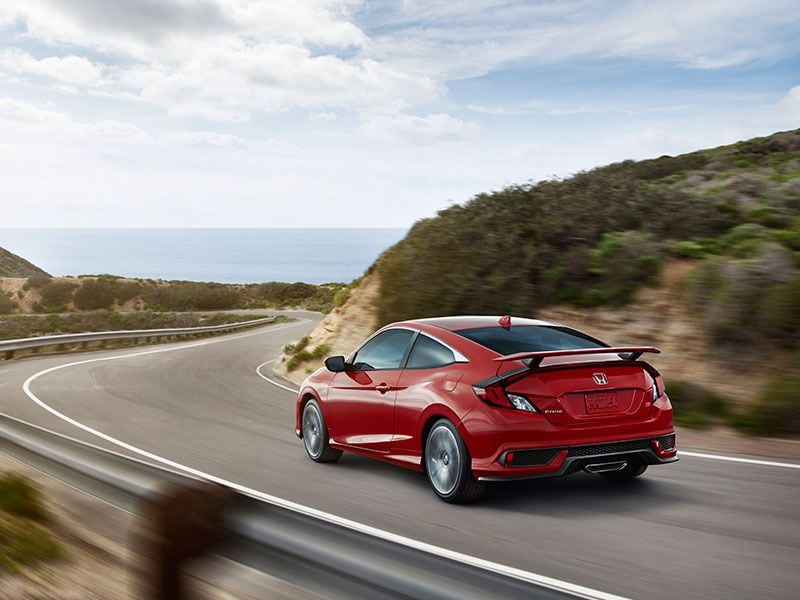
Photo by Honda
Shift for Yourself
Manual transmissions have been a key element in Honda’s Si models over the years, on the premise that shifting gears enhances the relationship between the car and the driver. The enhancement index is contingent on the operation of the shifter. Whether rear- or front-wheel drive, Honda transmissions have long been distinguished by precise engagements and positive feel. The Si’s six-speed gearbox is typical of the Si tradition, with shorter shift throws than the manual transmission available in other Civics, and closer internal gear ratios. It’s very snick-snick. Also, it’s the Si’s only transmission. There’s no automatic option.
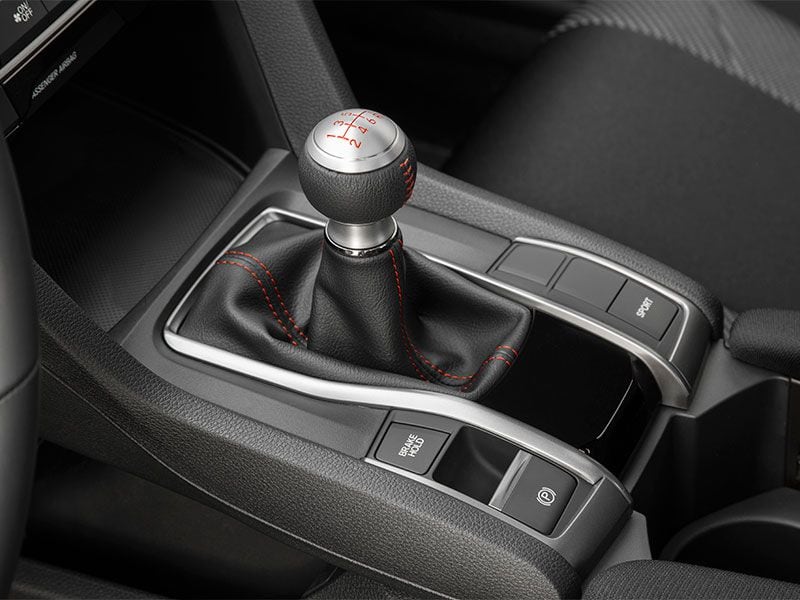
Photo by Honda
Tightened and Lightened
As with Si treatments of yesteryear, this eighth generation had an excellent starting point. The standard Civic’s combination of rigid chassis, firm suspension tuning, and turbocharged engine contributed to North American Car of the Year recognition in 2016. The Si simply takes the dynamic attributes of the standard Civic and enhances them. In addition to increased power, the upgrades include selective chassis stiffening, primarily around suspension pickup points; adaptive shock absorbers; harder suspension bushings; higher spring rates; heavier anti-roll bars; enhancements to the electric power steering system; and bigger brakes. And as with any vehicle, paring the curb weight — in this case by almost 100 pounds — inevitably pays dynamic dividends.
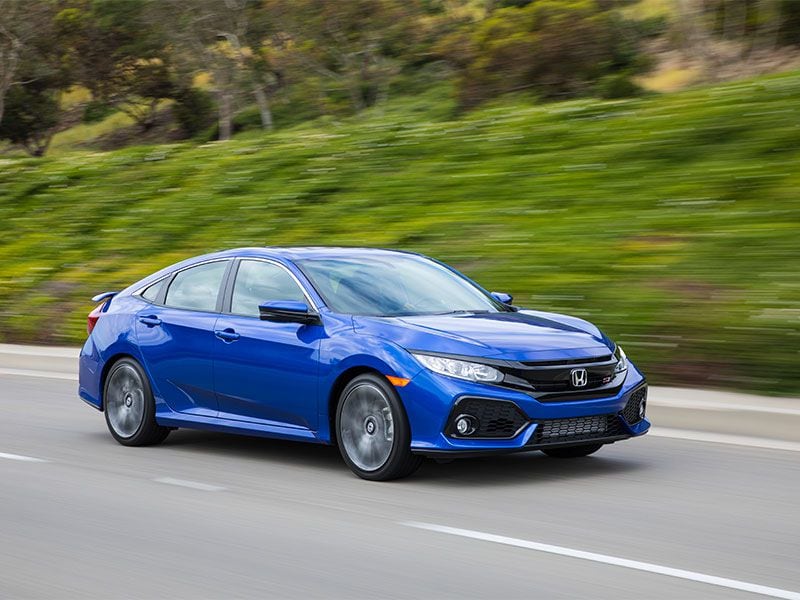
Photo by Honda
Contact Points
With almost any vehicle, the driver’s first impressions are strongly influenced by two elements—seats and steering wheel. The impressions are physical, and shape the driver’s response to the vehicle not only in terms of interior appointments but overall. When the driver settles into the Si’s sport bucket seat, he or she is sure to be impressed by the lateral support delivered by its generous thigh- and torso-bolsters, a positive response that’s sure to be reinforced when the g-loads start coming at various angles during hard cornering. And while the seat keeps the driver solidly planted in front of the steering wheel, it’s not too confining; the comfort index is high. This also goes for the front passenger seat. The gluteal regions do not lie. The three-spoke steering wheel, for its part, reinforces the sense of sport with its satisfying grip, and adjustability for both rake and reach. And the tactile information it conveys is exceptional, a topic we’ll amplify under the heading of dynamics.
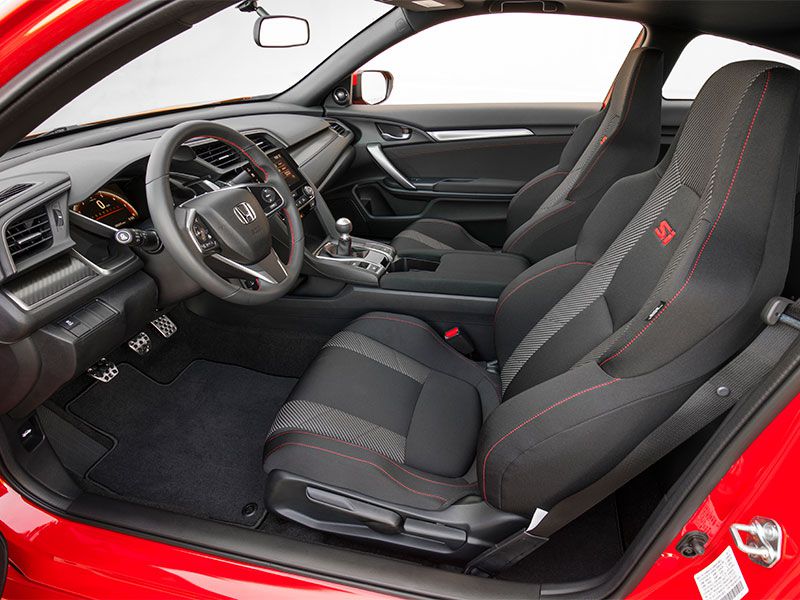
Photo by Honda
The Inner Si
Generally speaking, at the affordable end of the spectrum interior design teams project sportiness with black décor, and there’s plenty of that here — black on black, with little splashes of brightwork and a swatch of simulated carbon fiber on the dashboard. Besides the outstanding bucket seats (attractively upholstered in what seems to be a durable cloth), the interior inventory includes a 7-inch center dash display with touch-screen controls and navigation, Apple CarPlay and Android Auto, a 450-watt audio system, a power sunroof, and ambient lighting. The steering wheel is leather-wrapped, with the usual array of secondary control switches, but that’s as far as the hides stretch — there’s no leather seat option. In fact, options are conspicuous by their absence; there is exactly one. We’ll come back to that.
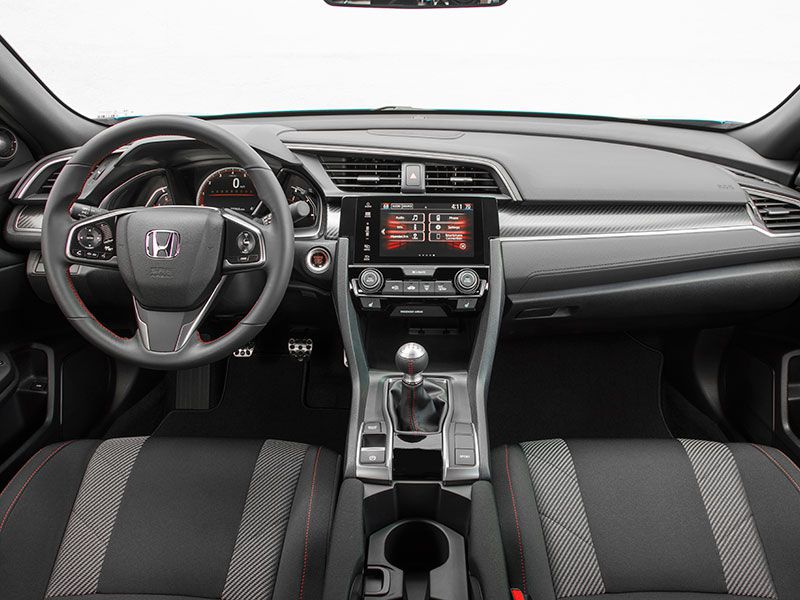
Photo by Honda
Sporty Trim
The Si’s exterior distinctions are subtle. As before, there are two body styles, coupe and sedan. The front end treatment includes black trim elements (upper and lower grilles, side air vents) and a deeper chin spoiler; there’s a wing on the rear deck, centered exhaust pipes, and the Si rolls on 18-inch wheels.
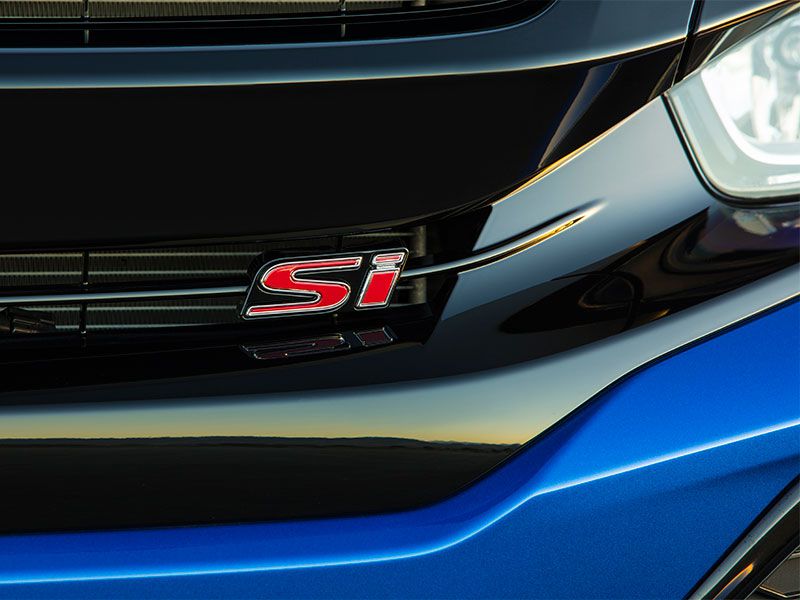
Photo by Honda
Gunfighter Reflexes
Every one of the Si’s responses has been sharpened. It can change directions in a flash, juke and jive on a twisty back road like an NFL running back -- responses amplified by the two-mode suspension (normal and sport), steering that’s quick (just 2.1 turns from hard left to hard right) and surgically precise, plus formidable braking. Like a sports car, the Si provides transportation for the spirit, as well as the body. And like the rest of the Civics, it takes good care of the body, too. The minimal suspension motion is a tradeoff for ride quality that’s all-day comfortable; an owner could be just as happy driving across Nebraska as the sinuous switchbacks of the Pacific Coast Highway between San Luis Obispo and Monterey.
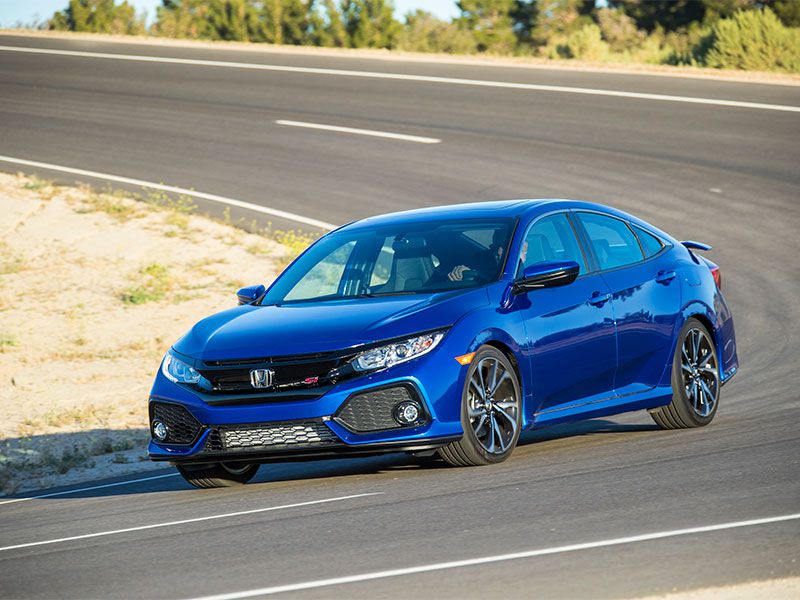
Photo by Honda
One Price Fits All
As noted, there’s no mystery or head-scratching when it comes to ordering a 2018 Civic Si. Coupe or sedan, the price is $24,775, all in The only option is performance tires—add $200. This gives the Si a distinct price advantage—at least $1000, base price to base price—versus the other compact class hot rods. And for the Si’s competitors, base price is just the beginning of the pricing ladder; all offer options.
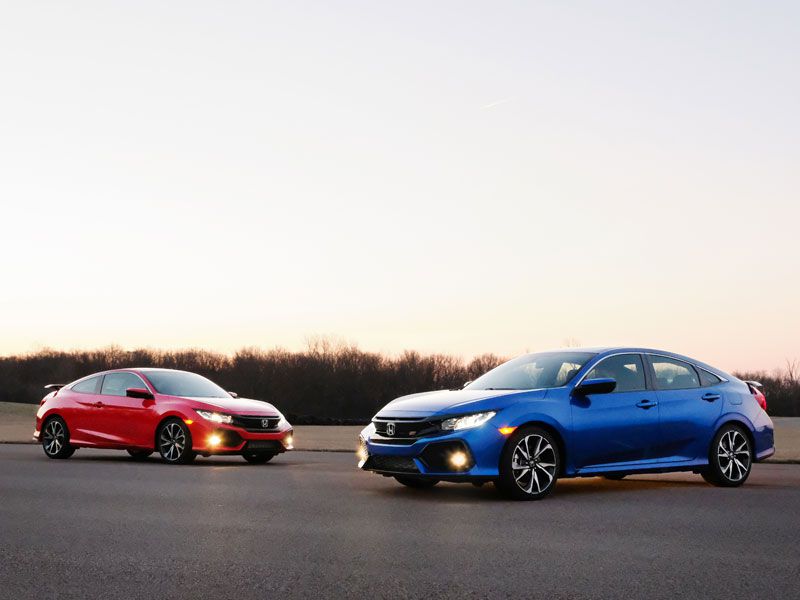
Photo by Honda
The Verdict
So where does the new Si rank in the hot compact derby? The answer depends on priorities. If the objective is face-distorting thrust, this car isn’t the type that shines at the drag strip. We wonder why Honda didn’t up the horsepower ante just a little more; turbocharging allows engineers to mine lots of punch from small displacements. But the rationale for holding horsepower to 205 is rooted in durability and reliability.
And in any case, the Si is about satisfying dynamics and athletic response, a car that will do well at autocross events, rather than straight ahead performance. Also, one might question why Honda carries on with three-box designs (ie, coupe and sedan) in a class known for hot hatchbacks, particularly with a nifty hatchback of its own, the first in a long time. Perhaps the product planners wanted to avoid any confusion with the upcoming Civic Type R, which is, in fact, a hatchback. That may account for the reticence on the horsepower front, too. Be that as it may, Honda has created a car that sustains and advances the Si tradition — a rewarding car for the discerning driver, at an attractive price. It’s a formula that’s worked through seven previous generations and scans as most likely to succeed in generation eight.
The Si is arriving at dealerships now.
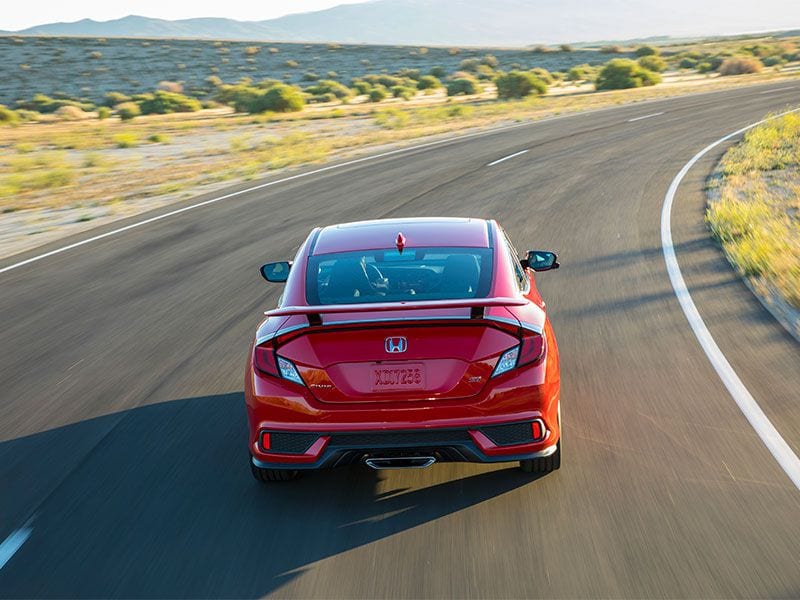
Photo by Honda